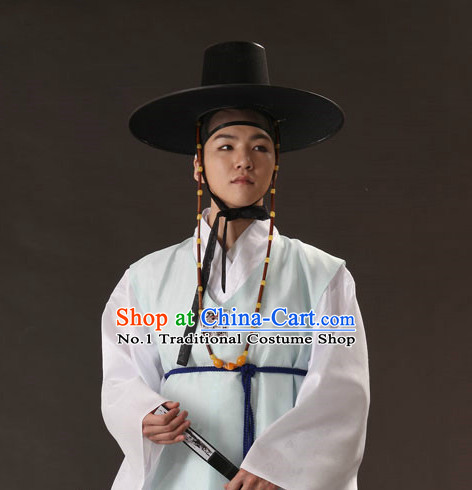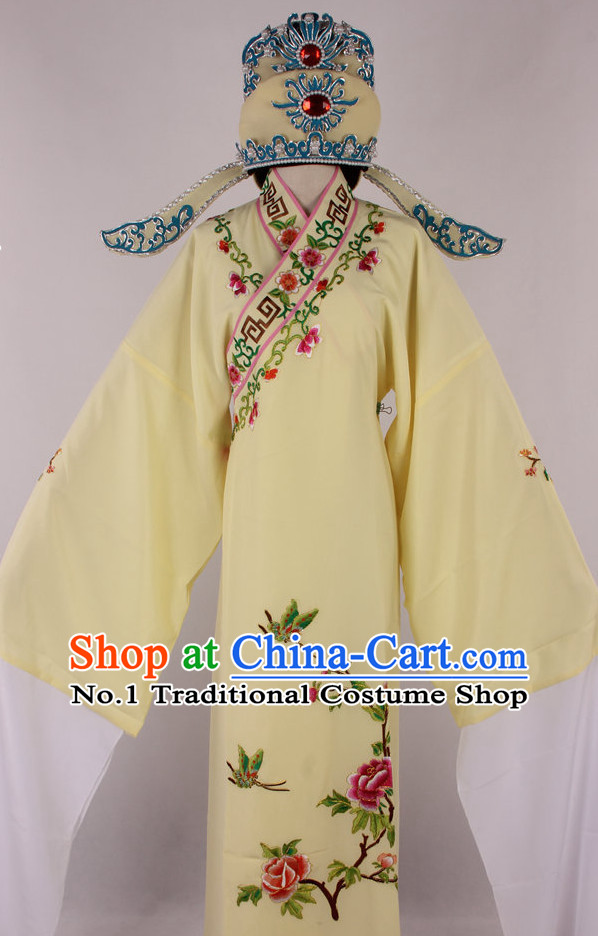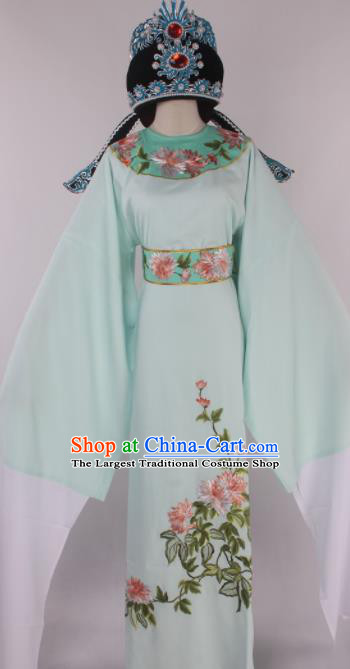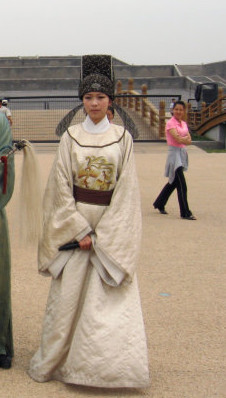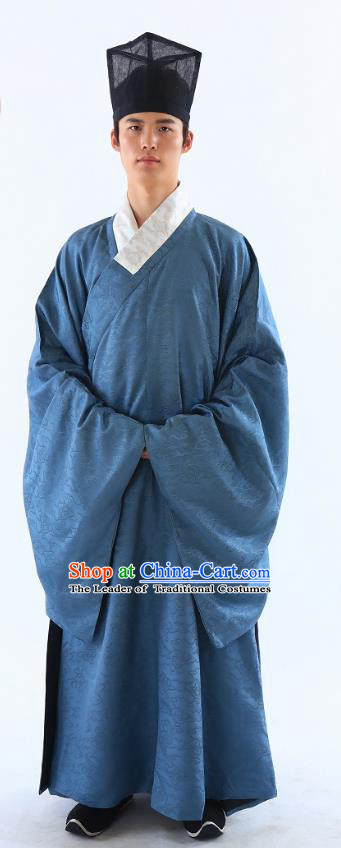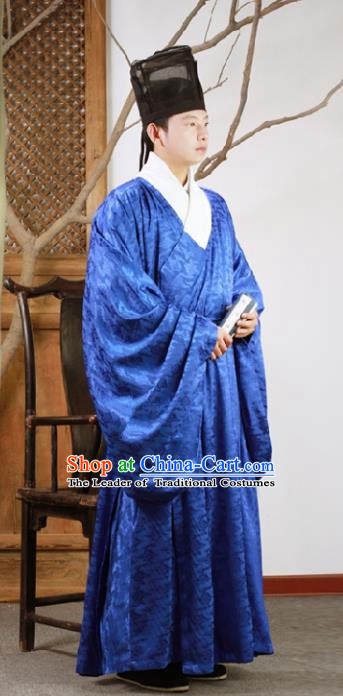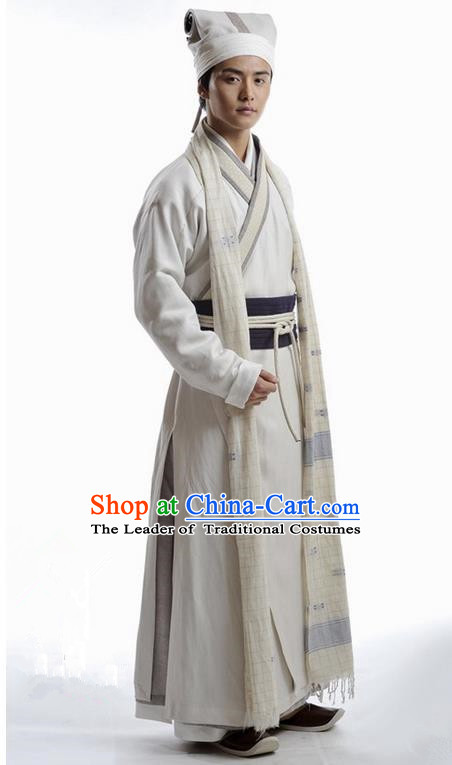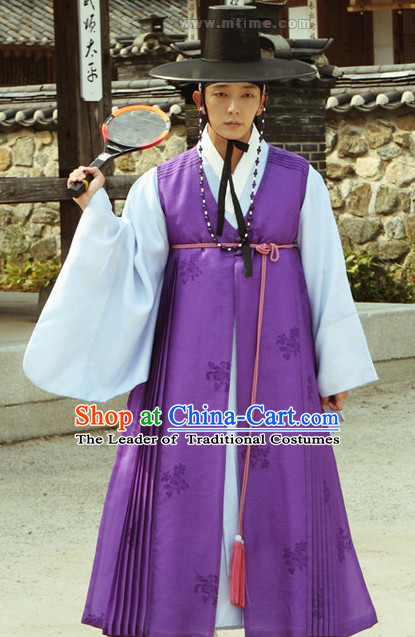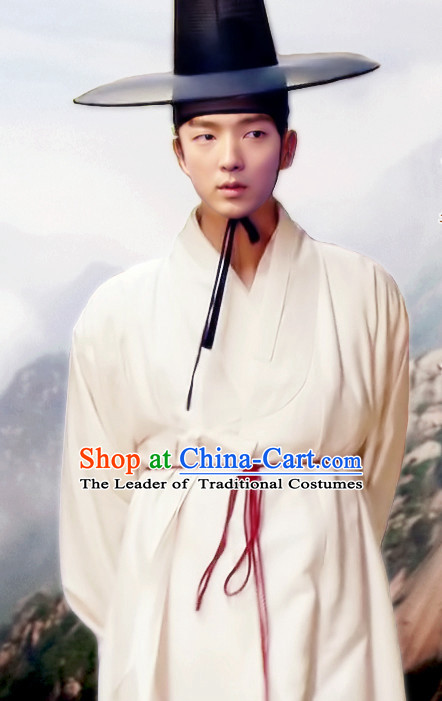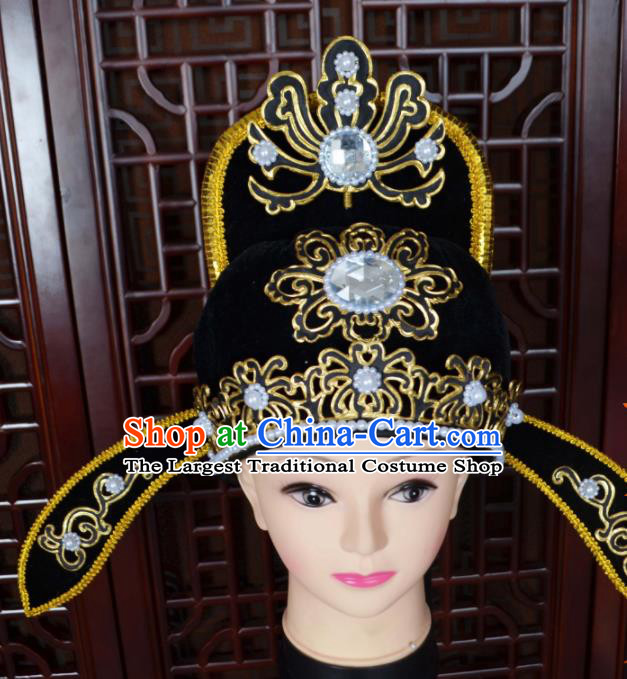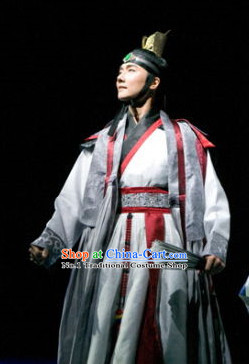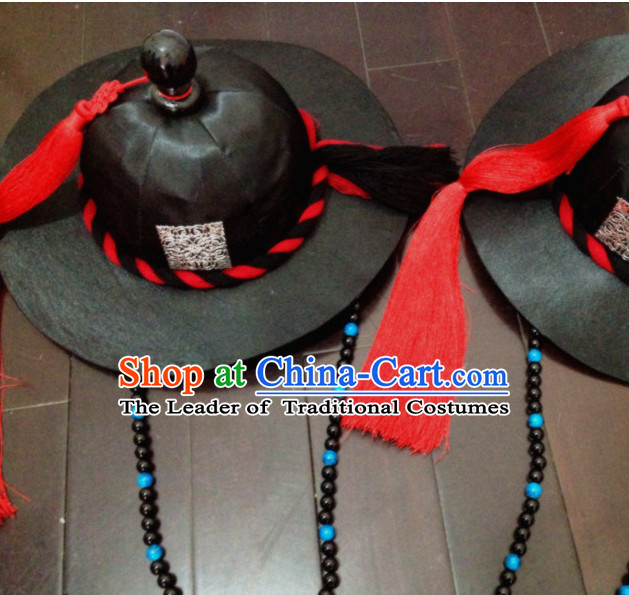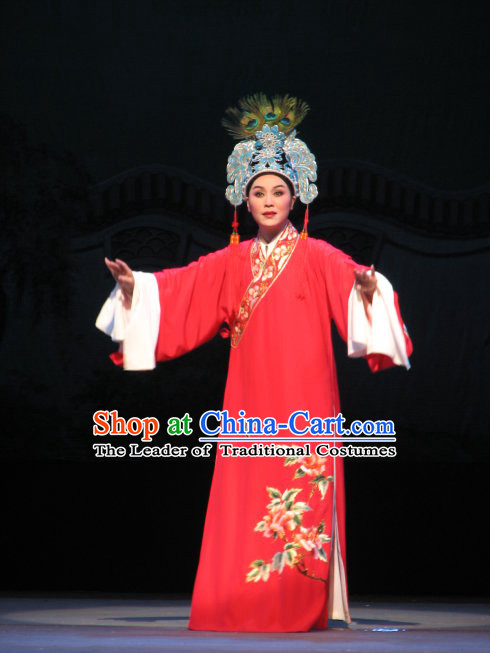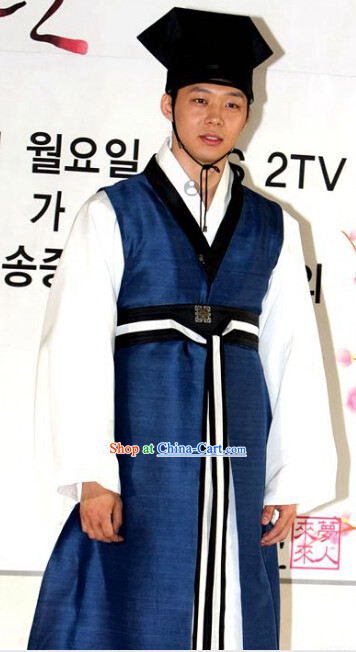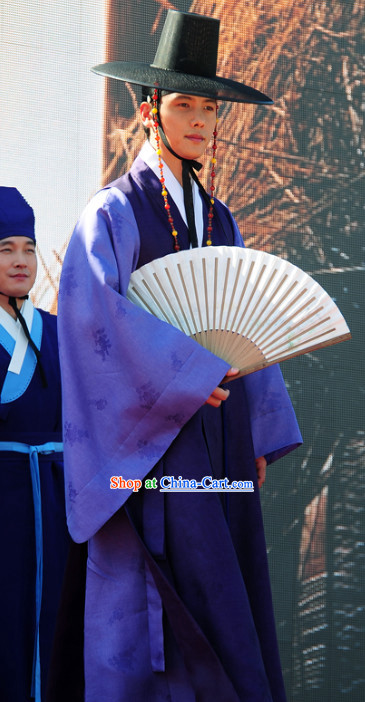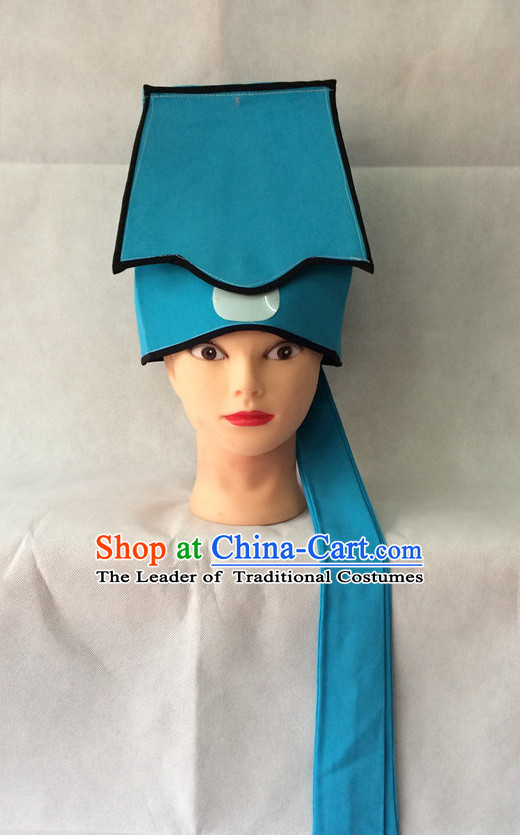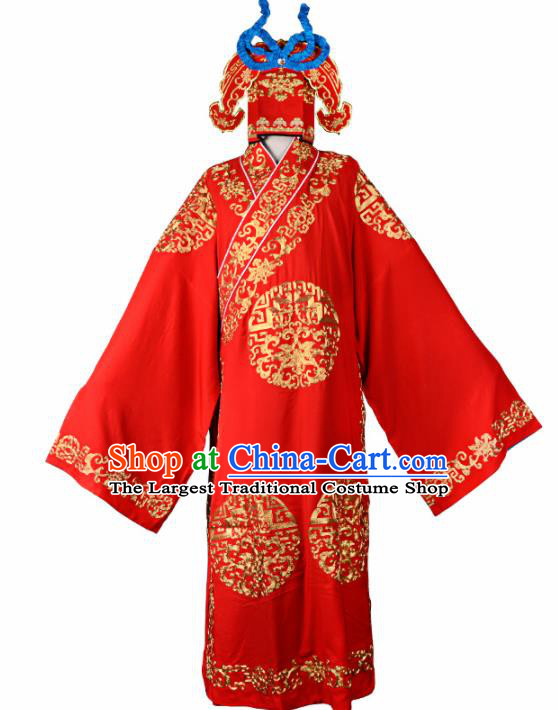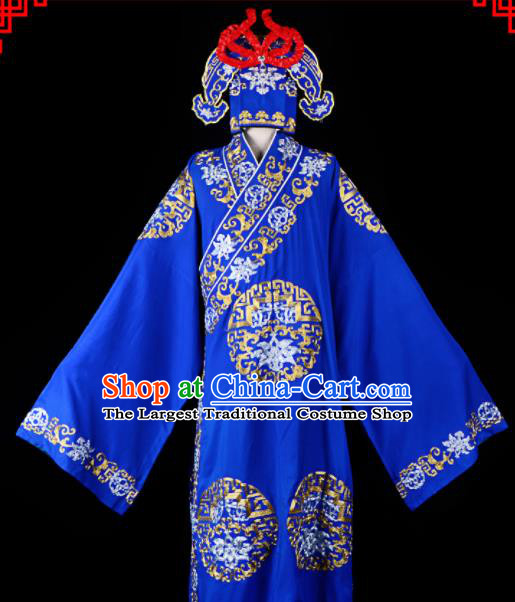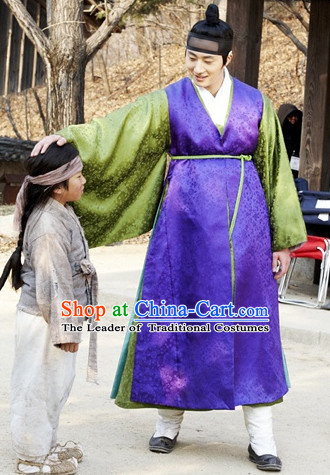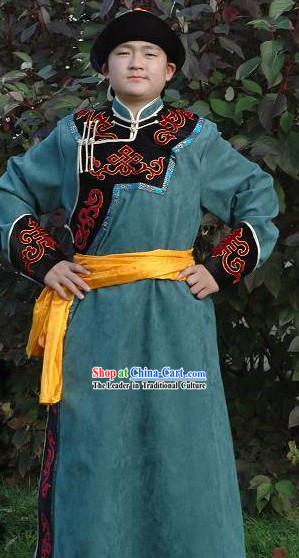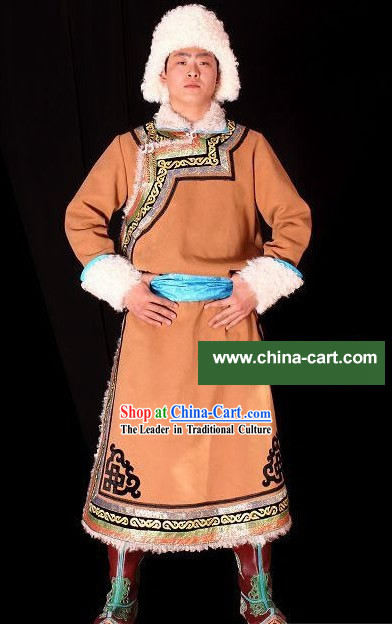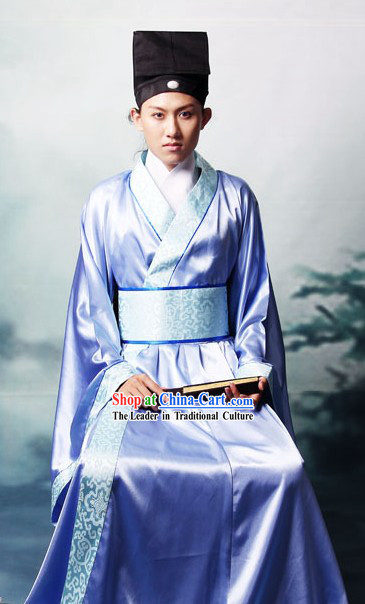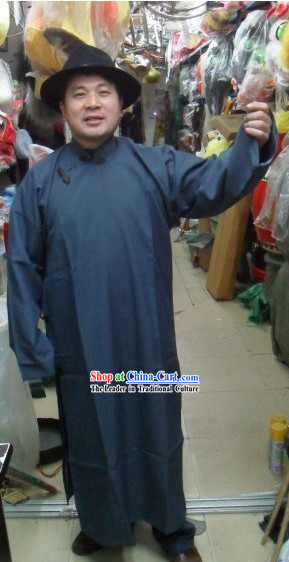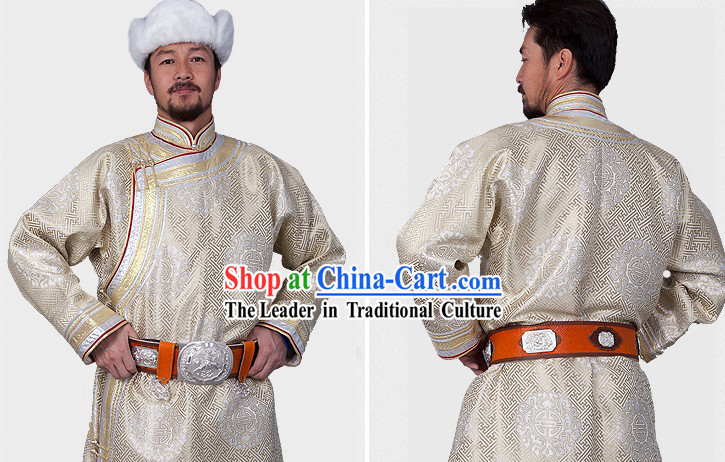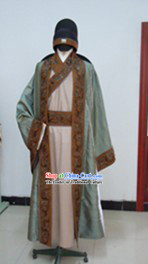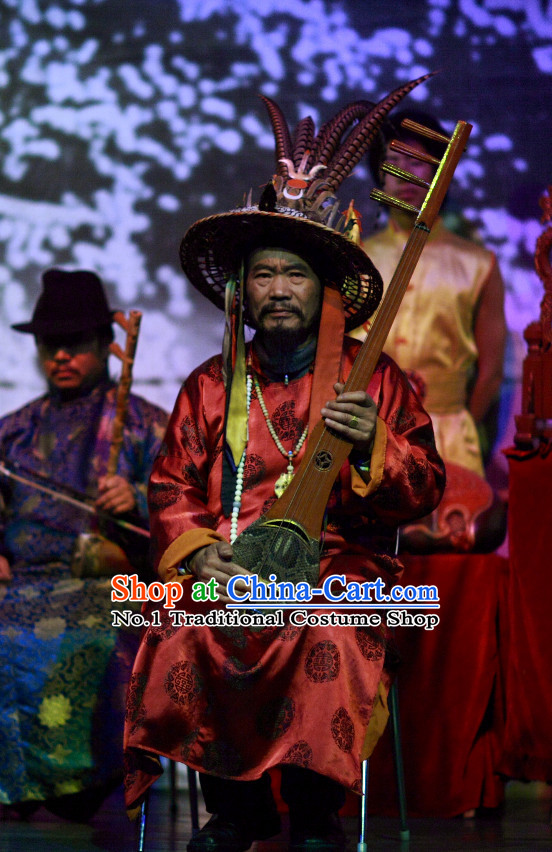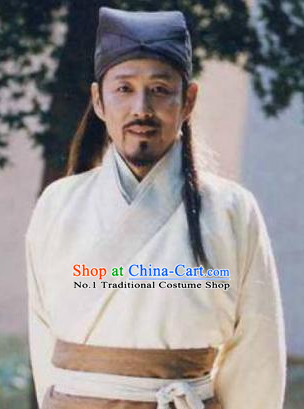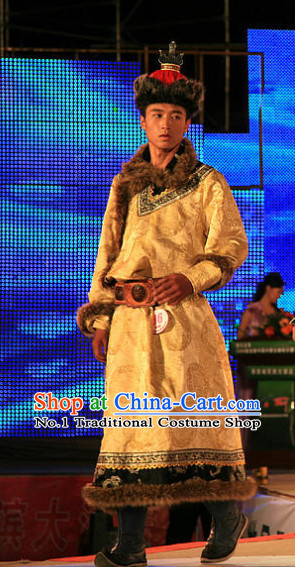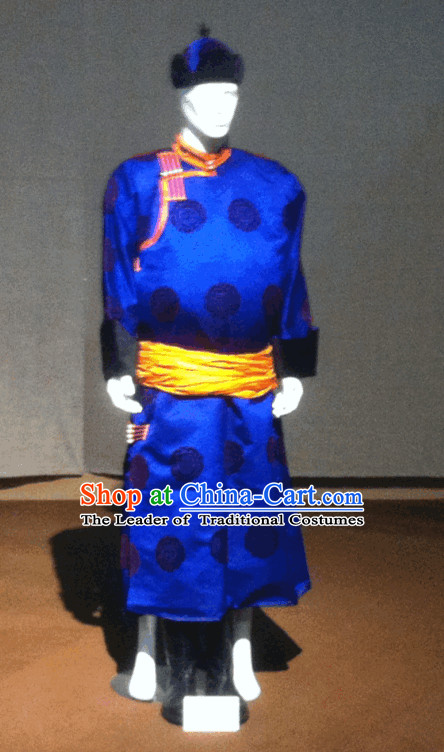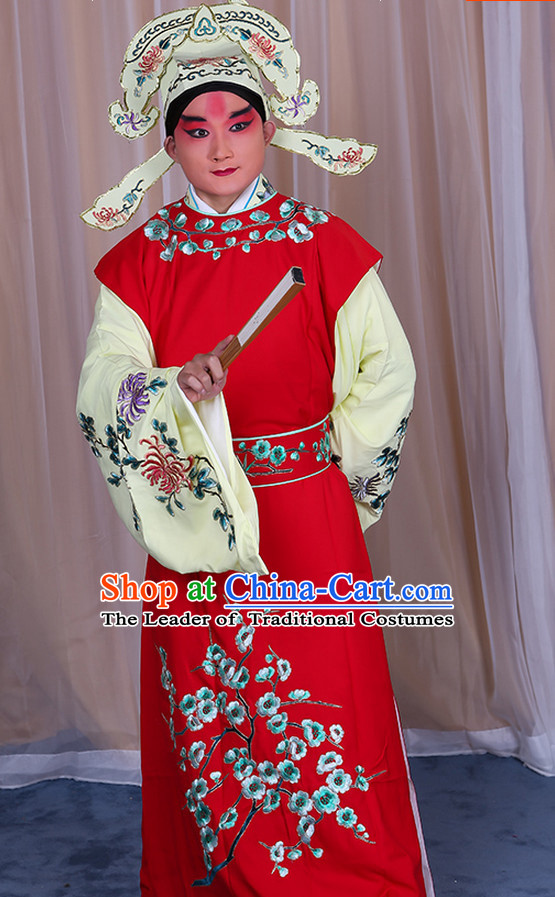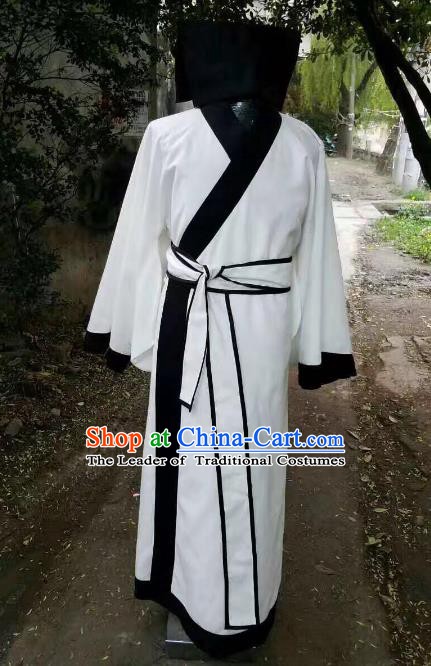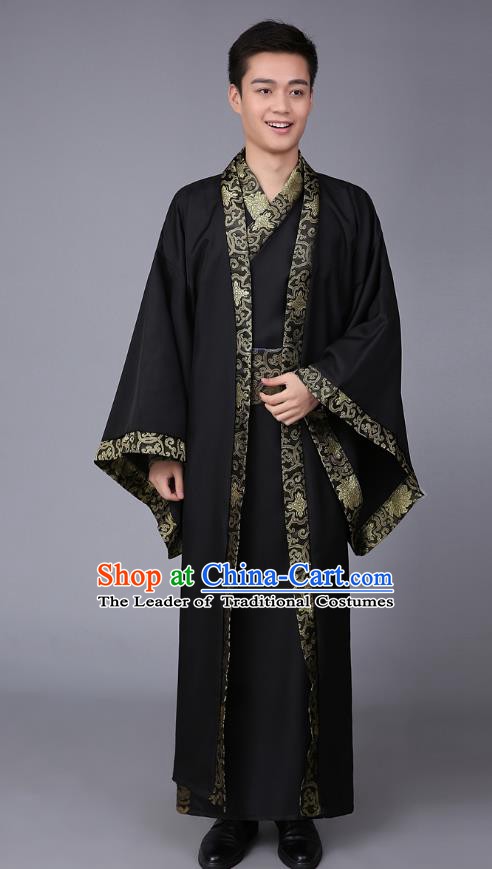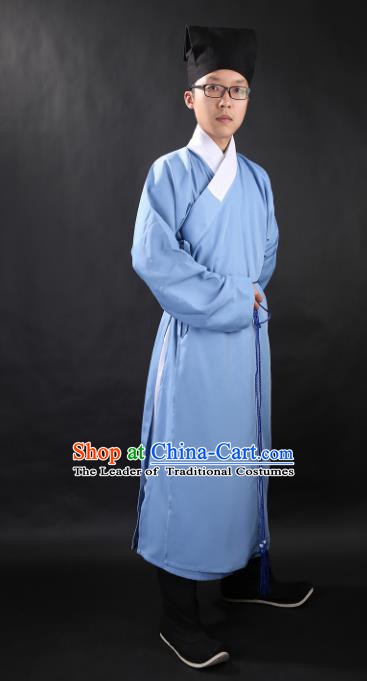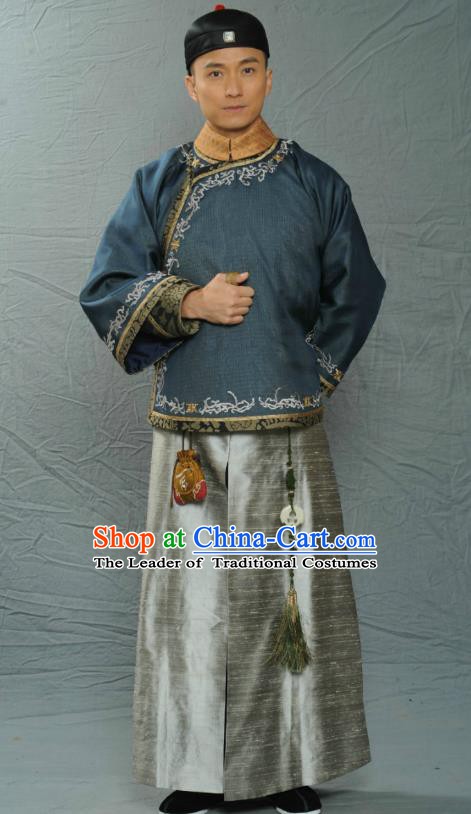
Click Related Pictures for More Audios:
Korean ancient scholars' robes and men's hats are an artwork with rich spiritual and cultural connotations and historical significance.
The robes and hats represent the identity and status of Korean ancient scholars, showcasing their respect for knowledge and learning.
This type of attire has a long tradition in Korean history, dating back hundreds of years.
It is not only a decorative garment but also carries symbolic meaning, representing the wisdom, knowledge, and character of scholars.
The design of the robes and hats is exquisite, with meticulous attention to detail.
They are typically made from high-quality materials such as silk or cotton to ensure comfort and durability.
The color of the robes is usually black or dark blue, creating a striking contrast with the white hat, making the overall appearance more eye-catching.
The hats often have golden decorations such as tassels, embroidery, or other patterns, which further enhance the overall artistic value.
In addition to its aesthetic appeal, this robe and hat also have important historical significance.
They are symbols of the identity of Korean ancient scholars and reflect the importance society placed on education and knowledge at that time.
In that era, scholars were considered pillars of society, and their wisdom and knowledge were crucial to the country's development.
Therefore, wearing such attire became a manifestation of honor and pride.
In conclusion, Korean ancient scholars' robes and men's hats are an artwork with rich spiritual and cultural connotations and historical significance.
It not only showcases the identity and status of Korean ancient scholars but also conveys respect for knowledge and learning.
The design of the robes and hats is exquisite, with meticulous attention to detail, making it an aspirational artwork.
